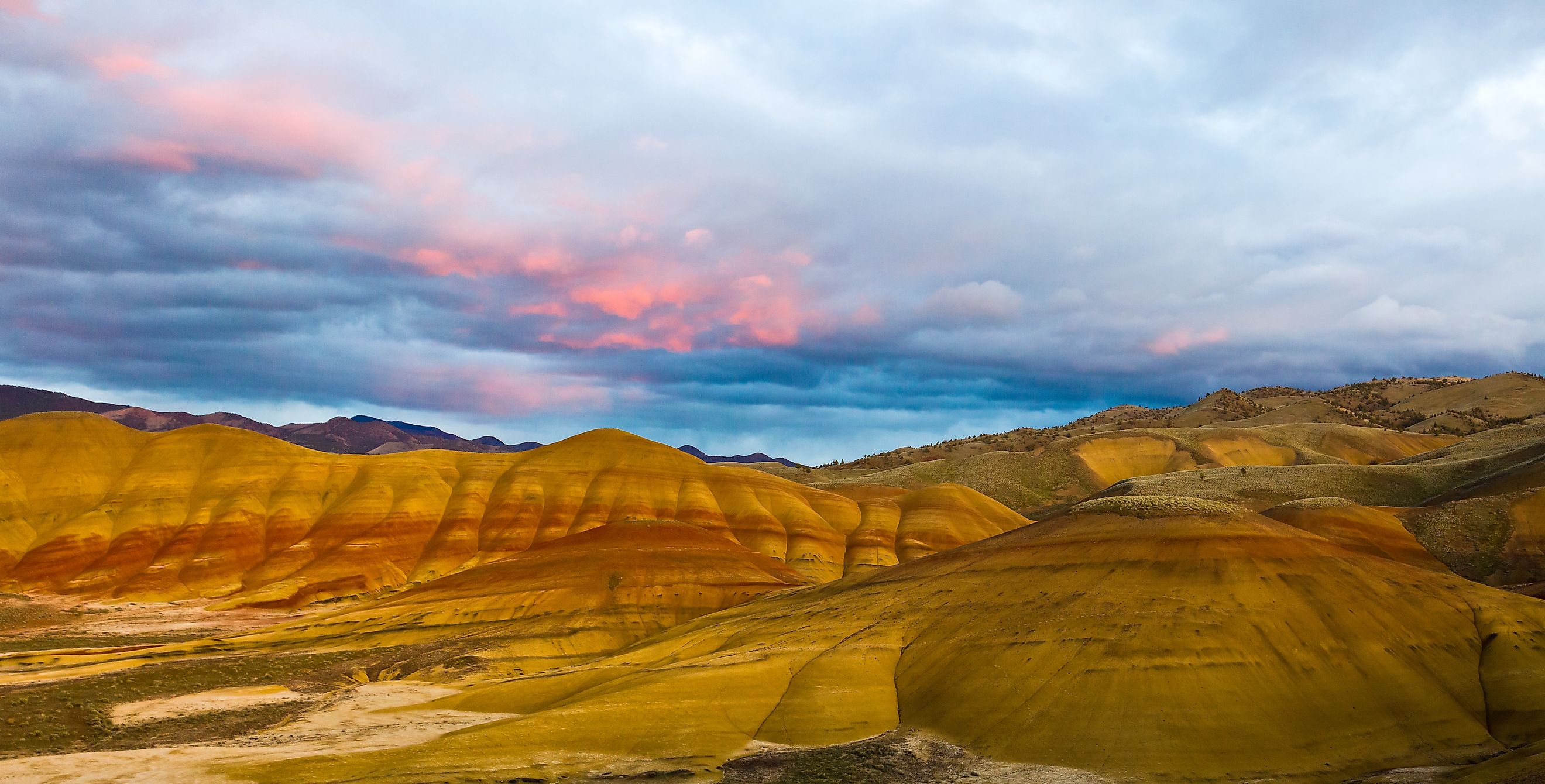
The Painted Hills of Oregon
Oregon’s Painted Hills are a visual masterpiece and a geological treasure. Located in Wheeler County, this unit of the John Day Fossil Beds National Monument spans 3,132 acres, just 9 miles northwest of Mitchell, Oregon. Known for its multicolored layers, the Painted Hills have earned recognition as one of the Seven Wonders of Oregon. The vibrant stripes reveal millions of years of climate shifts, volcanic activity, and soil chemistry, providing both scientists and visitors with a front-row seat to Earth’s ancient story.
While the Painted Hills attract photographers and hikers, the landscape is much more than a backdrop for Instagram photos. Each layer tells a tale of a planet in motion, where fire, water, and time sculpted the land into a living canvas.
The Birth of the Hills
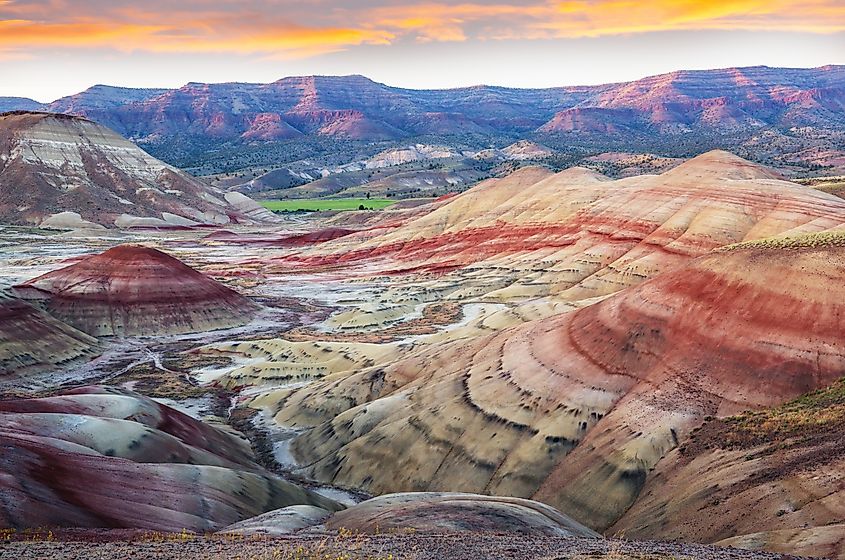
The Painted Hills began to form around 35 million years ago when volcanic eruptions in the Cascade Mountains sent ash and pumice eastward. Traveling over 100 miles, this material settled across the region. Natural processes such as water flow, plant growth, and the movement of animals mixed the ash with soils. As new layers accumulated, the ash compacted and cemented into hard claystone, forming the unique layers we see today. Over millions of years, weathering sculpted the hills’ soft contours, leaving behind a landscape of gentle ridges, dramatic folds, and vivid colors.
A Timeline Written in Color
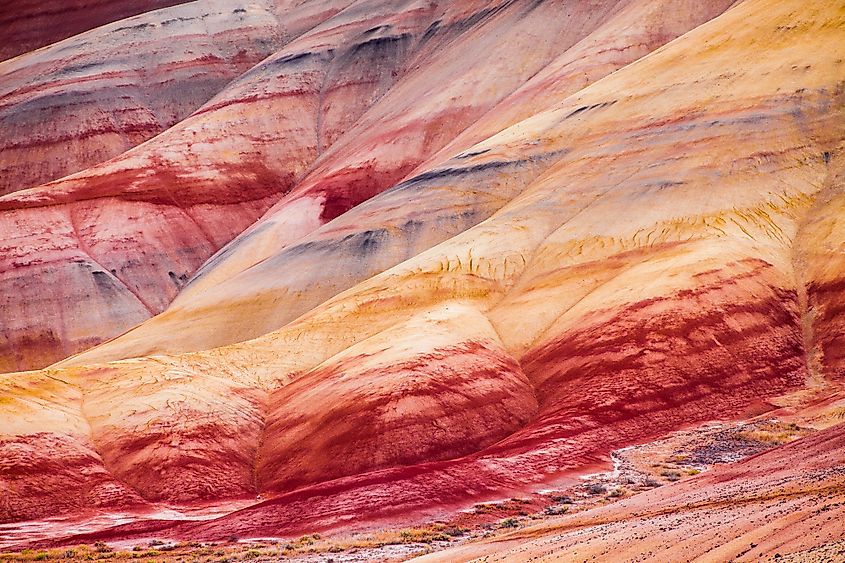
The Painted Hills’ colors are not random. They are the result of minerals interacting with volcanic ash over millions of years. Red layers, rich in iron and aluminum, formed during wetter periods when floodplains carried iron-laden sediments. Yellow layers, derived from iron and magnesium oxides, represent cooler, drier periods. Black soils are lignite, remnants of ancient vegetation, while grey tones reflect mudstone, siltstone, and shale. Dark streaks come from manganese oxide.
This layering provides a visual record of the transition from the humid Eocene epoch to the cooler Oligocene epoch, approximately 34 to 28 million years ago. Essentially, you can read the climate history of Oregon by observing the hills.
Fossils and Ancient Life
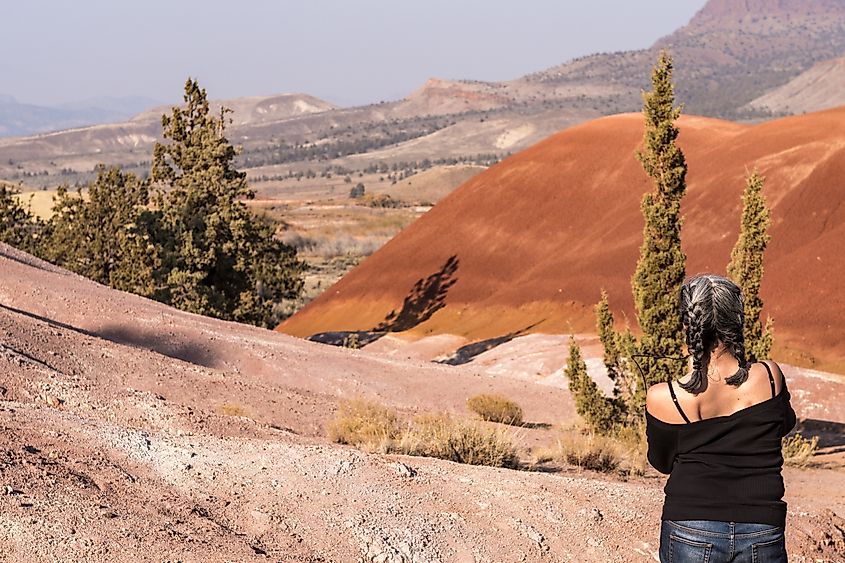
Though fossils are rare in the Painted Hills themselves, nearby areas of the John Day Fossil Beds reveal a rich prehistoric world. Leaf fossils indicate the presence of ancient redwoods, cinnamon trees, figs, and alders, suggesting a warmer, more humid climate than today. Vertebrate fossils from early horses, camels, and rhinoceroses underscore the region’s significance for paleontologists. These fossils provide a window into ecosystems that existed long before humans roamed the area.
Fossil enthusiasts and scientists value the Painted Hills and surrounding units because they allow for a study of ancient flora and fauna in their natural context. The combination of layered soils and fossil remains paints a picture of life millions of years ago.
Trails Through Time
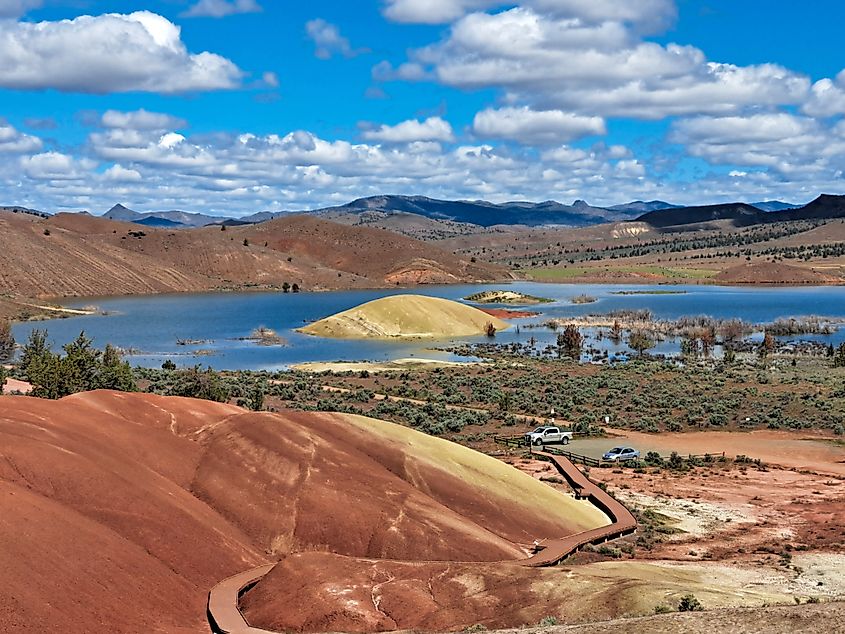
Hiking the Painted Hills offers more than exercise and fresh air. Trails wind through ridges and valleys, allowing the oppotunity to closely observe the multicolored layers. Trails range from short walks to longer treks, catering to casual walkers and avid hikers. Well-marked paths help protect the fragile soil layers and ensure the preservation of this natural wonder.
Follow the “Don’t Hurt the Dirt” pledge and Leave No Trace principles. Straying off trails can damage the delicate claystone surfaces and alter the landscape. Respecting the hills ensures that future generations can enjoy the same vibrant displays.
Shifting Light, Shifting Colors
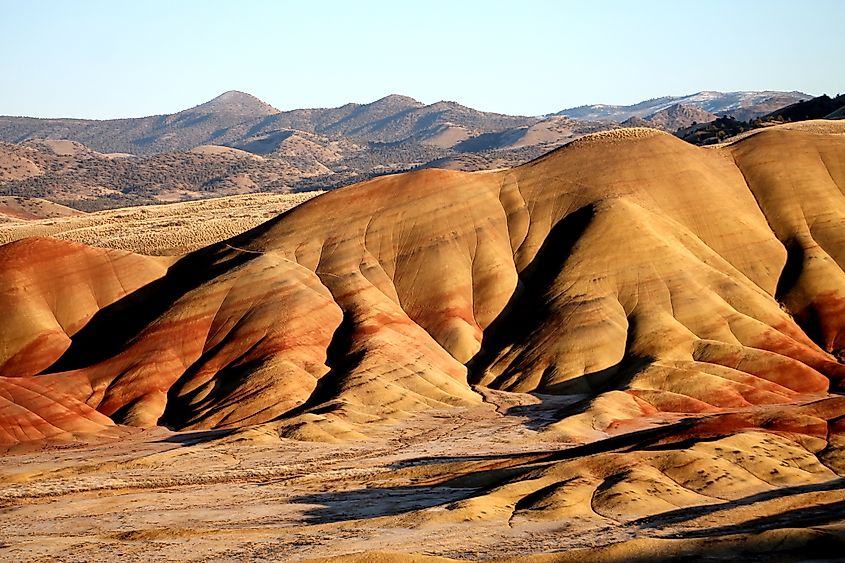
The Painted Hills are never the same twice. Weather, moisture, and sunlight all affect their appearance. Wet conditions make the colors appear deeper and more saturated, while dry periods reveal muted, earthy tones. Early morning and late afternoon light can cast dramatic shadows, emphasizing the ridges and folds of the landscape. Seasonal changes bring subtle shifts, creating opportunities for repeated visits and fresh perspectives.
Photographers often plan trips around light and weather conditions. Cloudy skies can enhance textures, while sunlight brings out brilliant reds and yellows. The variability of the hills makes each visit a truly unique experience..
Photography Paradise
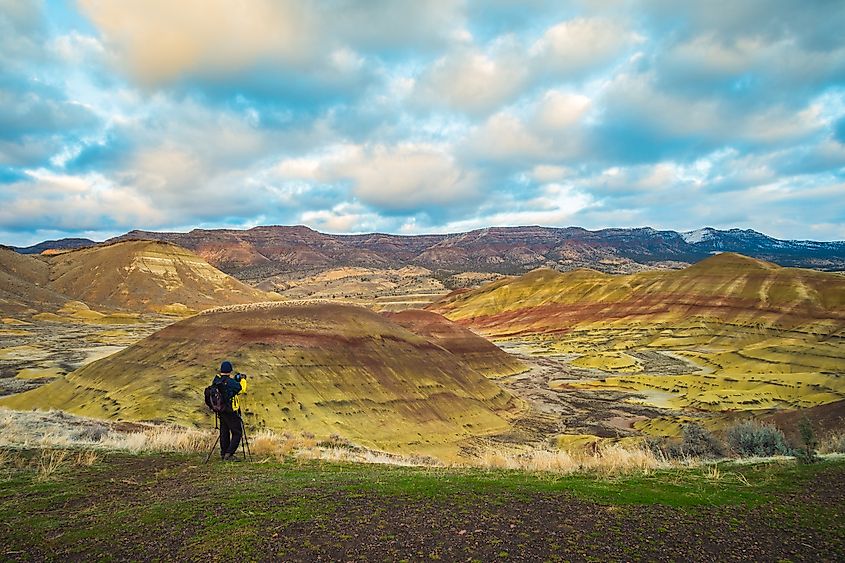
The Painted Hills offer endless inspiration for photographers. Panoramic shots capture sweeping vistas of rolling hills and colorful ridges, while close-ups reveal intricate textures and mineral patterns. The hills’ ever-changing hues, combined with shadows and sunlight, make it possible to find a new visual composition with every visit.
Photographers also appreciate the contrast between soft hills and the rugged terrain of the surrounding John Day Fossil Beds. Distant mountains, grassy plains, and the occasional wildlife sighting add layers of depth to photos. For those seeking landscape photography with geological significance, the Painted Hills are unparalleled.
Recreation and Visitor Tips
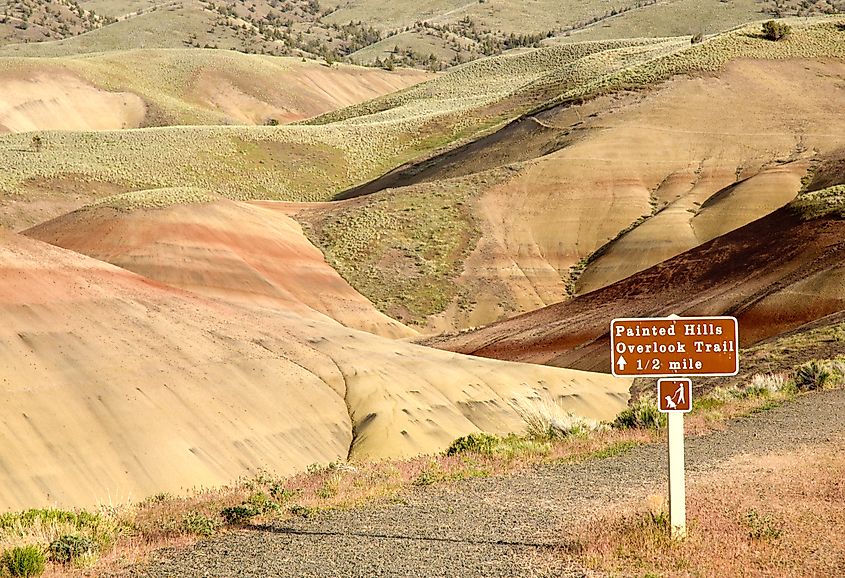
The Painted Hills are accessible year-round, with parking and trailheads located near Highway 26. Nearby John Day provides accommodations, restaurants, and visitor services. Spring through fall is the ideal time to visit, when weather conditions enhance the visibility of colors.
Come prepared with water, sun protection, and sturdy footwear. Informational signs along the trails explain the geological history, mineral composition, and fossil record of the hills, enriching the experience for hikers of all ages.
Why the Painted Hills Matter
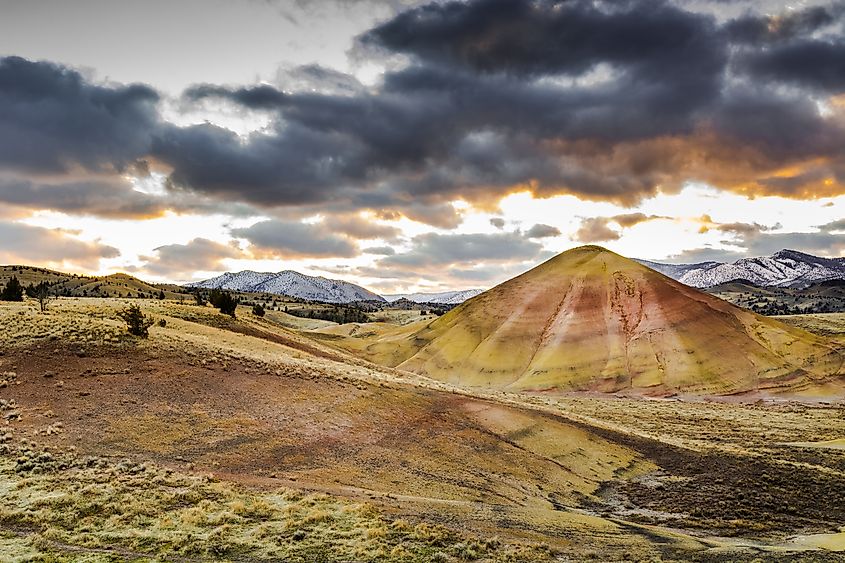
The Painted Hills are more than a visual attraction. They provide scientists with a record of Earth’s climatic and geological history, revealing how volcanoes, climate cycles, and erosion interact over millions of years. The colorful layers serve as natural archives, chronicling the story of the Eocene and Oligocene epochs and offering insights into the evolution of ancient ecosystems.
Understanding the formation of the Painted Hills also helps scientists predict how landscapes respond to environmental changes. The hills demonstrate the lasting impact of volcanic activity, soil chemistry, and climate cycles on shaping terrain over geological time.
Living Art: Nature in Motion
Visitors to the Painted Hills witness nature’s artistry at work. The hills combine visual beauty with scientific significance, creating an experience that is both awe-inspiring and educational. Hiking the trails, observing shifting colors, and studying the fossilized leaves and layers fosters a connection to a world that existed millions of years ago.
Each visit offers an opportunity to appreciate the subtle details, whether the vibrant red of an iron-rich layer, the yellow tones of magnesium-rich clay, or the dark streaks marking ancient vegetation. The Painted Hills are a rare place where art, history, and geology converge.
Quick Facts: The Painted Hills
| Feature | Detail |
|---|---|
| Location | Wheeler County, Oregon, 9 miles northwest of Mitchell |
| Size | 3,132 acres |
| Part of | John Day Fossil Beds National Monument (Painted Hills unit) |
| Colors | Red, yellow, black, grey from mineral-rich soils |
| Formation | Volcanic ash from Cascade Mountains, 35 million years ago |
| Climate Influence | Layers formed during alternating warm/wet and cool/dry periods |
| Fossils | Leaf fossils and vertebrate fossils of early horses, camels, and rhinoceroses |
| Trails | Several well-marked trails; year-round access |
| Visitor Tips | Stay on trails, bring water, wear sturdy shoes, practice Leave No Trace |
| Recognition | Listed as one of the Seven Wonders of Oregon |
| Notable Events | 2017 Great American Eclipse passed over the site |